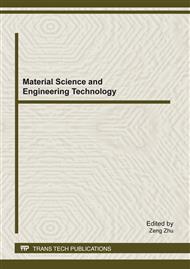p.474
p.480
p.487
p.492
p.500
p.506
p.512
p.516
p.524
Detection Sensitivity Based on Energy Detection in Cognitive Radio Systems
Abstract:
Traditional energy detection algorithm is bad in anti-noise. In this paper, the relationship of energy detection performance and detection sensitivity with average noise power fluctuation in short time is investigated. Detection sensitivity drops quickly with the increment of average noise power fluctuation and becomes worse in low signal-to-noise ratio. To the characteristic, a new energy detection algorithm based on dynamic threshold is presented. Theoretic results and simulations show that the proposed scheme removes the falling proportion of performance and detection sensitivity caused by the average noise power fluctuation with a choice threshold, and also improves the antagonism of the average noise power fluctuation in short time and obtains a good performance. Detection sensitivity and performance improves as the dynamic threshold factor increasing.
Info:
Periodical:
Pages:
500-505
Citation:
Online since:
February 2012
Authors:
Price:
Сopyright:
© 2012 Trans Tech Publications Ltd. All Rights Reserved
Share:
Citation:


